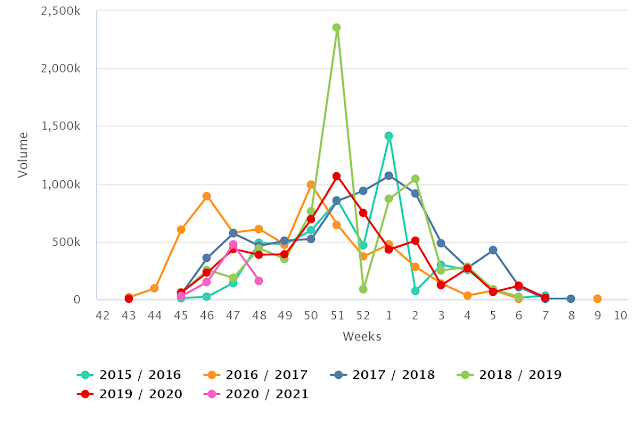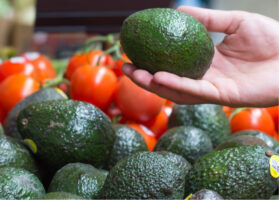Supplies of Chilean cherries to US increase by 140% compared to same time last year

Overview of the Chilean cherries supplies in the U.S. market, complemented by charts from Agronometrics. Original published on December 3, 2020.
Source: USDA Market News via Agronometrics.
(Agronometrics users can view this chart with live updates here)
Opportunities in the US market
The increase in the shipments to the US so far this season are both due to available supplies and increased demand. “There is a lot of volume available in Chile right now, and, while China remains the main destination, some growers are looking to diversify their markets more. We have worked very hard in the last few seasons partnering with the right growers from Argentina and Chile, delivering the product that shoppers are looking to add to their baskets, and this is helping to increase the demand we are experiencing. We at Pacific Trellis Fruit are handling strong programs starting early in the season to as late as the end of February,” says Hernandez.
For US retailers, the sizing of the cherries is becoming very important. Retailers that would take XL in the past are now looking for Jumbos “While we are seeing a major interest for the cherries out of Chile, retailers continue to look closely at sizing and often are looking for jumbo size cherries as well as high quality. Still, I think that extra-large size cherries could find some good opportunities in the US market, but for the Large size it will be much harder this year,” Hernandez says.
Overall demand for the cherries in the US is up, though the week following Thanksgiving is usually slower. “After Thanksgiving, people don’t usually purchase more expensive premium produce, but just restock on the basics. Because of the holidays, the volumes that arrived on Wednesday and later last week had to wait until this week to be distributed so this could be a challenging week,” Hernandez explains.
China continues to be the biggest importer of Chilean cherries
The Chilean cherries are very popular on the Chinese market, Hernandez says. “The Chinese market is extremely hot right now. There, it’s seen as a premium fruit and it’s very popular. This means that the prices paid are very high. While the volumes shipped to the US have seen a huge increase, it still represents less than 1% of the total volumes shipped by Chile so far.”
Because the prices paid by China are so high, the pricing for the US retailers who want to stock the Chilean cherries is driven up. Hernandez explains: “To increase the market share of the cherries in the US, changes would need to happen from both sides. Retailers need to pay a more competitive price and the growers need to provide them with the same quality and pricing that they export to China. With Chile seeing a big increase in their volumes this year, there will be more fruit available and the opportunities and interest will likely increase too. Keep in mind that the cherry pricing is highly elastic, and if there is a little bit of extra volume on the market the price usually goes down quickly.”
In addition to this, the US also enjoyed a very good domestic cherry season, which affects the market. “The excellent product from the domestic season elevated the expectations of the consumers. This adds more pressure to the market, and both quality and sizing are going to be very important for the imported cherries,” Hernandez says
Strong and long season expected
The ocean freight cherries will arrive starting the 1st or 2nd week of December which will mean steadily strong volumes and lower pricing. “This is when our fixed price programs with retailers start. The fruit that’s available today is mostly for the spot market,” says Hernandez. “We have a very good program and good supplies for the ocean cherries this year, and the season will be able to run through February. The growers we work with, both form Argentina and Chile, have great quality and strong volumes, so we can be very competitive this season,” he concludes.
The peak of the Chilean cherry season is expected to hit between the last week of December and the second week of January.
The News in Charts is a collection of stories from the industry complemented by charts from Agronometrics to help better tell their story.
Access the original article with this (Link)







